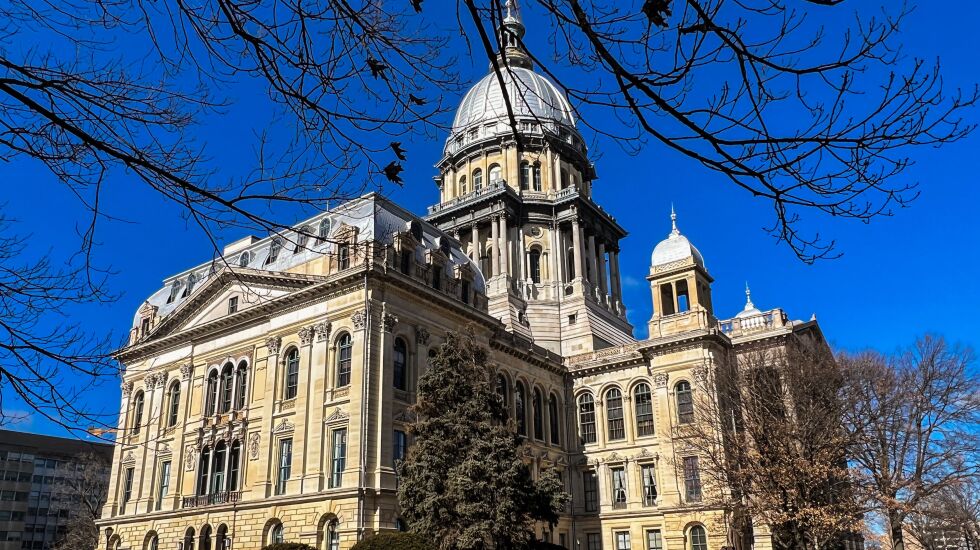
Illinois Republicans have been saying ever since a state budget deal was announced by the majority Democrats that not enough money was appropriated for fiscal year 2024 to pay for the new AFSCME Council 31 employee union contract. Some have even predicted that the contract plus other spending pressures, including health care for undocumented immigrants, will eventually lead to a tax hike.
Gov. J.B. Pritzker said in June, weeks before the contract was finalized, that the GOP claim was “one of those false things that Republicans like to say about the budget.” In fact, he said, “We built in what we thought might be the appropriate amount of money for what we expect from that AFSCME negotiation.”
The contract ended up with a fiscal year 2024 price tag of $204 million (the Republicans had predicted costs of $200-300 million). So, where is that money in the budget, which passed a month before the negotiations ended?
I turned to Carol Knowles, who is the deputy director for communications at the Governor’s Office of Management and Budget (GOMB).
“The agencies officially did not budget for COLAs in their budget submissions,” Knowles said via email of employee cost of living raises. And she said her office didn’t give the agencies any guidance about the topic, either, “as that would be not respectful of the labor negotiation process by indicating ahead of time what number the administration was willing to pay.” It also wouldn’t be smart negotiating to tip the state’s bargaining hand in advance, but she didn’t say that.
Because the cost increases weren’t submitted to the legislature, “some lawmakers may have interpreted that as ‘there is no money in the budget for the union contract,’” Knowles said.
But, Knowles continued, “There was cushion in agency budgets to assist them in managing in the new fiscal year.”
Knowles explained that GOMB, “spends most of the year building and planning for upcoming fiscal year agency budgets, and have a lot of knowledge regarding individual agency spending patterns, hiring patterns, lag time to hire and appropriation flexibilities, that sort of thing, and work with agencies to estimate when/if in a fiscal year people will be hired, how many will retire, and what the new folks will earn, etc.”
So, she said, “Early in the budget building process last fall for Fiscal Year 2024, one of the things GOMB did was work to identify what the cost of a 1% COLA for AFSCME employees might mean for each individual agency. We could scale that number when we needed to. That data would then give us a good basis/knowledge going into the spring session.”
Knowles continued that they put some “additional funding/flexibility” into the governor’s budget proposal in February beyond cost of living increases.
I had zero luck getting any actual numbers from the budget office, but Knowles did provide a hint, saying part of what they did earlier this year “was provide more flexibility than in a typical year on various assumptions we use to build the personal services budget,” to help the agencies “absorb some of the likely costs that would be associated with a new contract.”
They then shifted more salary dollars around in the final budget package, she said. And then they gave the agencies even more flexibility by allowing them to repurpose up to 8 percent of their operating budget for other uses. “So, while we didn’t know the dollar amount that would be needed, we believe we have put good tools in place to allow agencies to be able to manage much of the first year impact,” Knowles said.
Now that the contract has been ratified, Knowles said, “we will be working with the agencies to determine whether our various assumptions will work for the agencies.”
I asked for more specifics of how the “cushion” was built. “Increased appropriation authority was added to various lines,” was all Knowles replied.
OK, so the bottom line is we still don’t know where that money was stashed in order to create a “cushion” for agencies. A little extra appropriated here and there, particularly for salaries, is what it looks like.
Allowing agencies to transfer up to 8% of their appropriations between line items is also key. That money can be moved around to pay for 22 different categories of spending, including personal services, pension contributions, group health insurance, etc. So, they basically could’ve padded just about anything.
I assume the budget office refused to reveal much because it would provide keys to legislators and others to figure out how they do the voodoo they do. But this is beyond opaque.
Rich Miller also publishes Capitol Fax, a daily political newsletter, and CapitolFax.com.
The Sun-Times welcomes letters to the editor and op-eds. See our guidelines.







